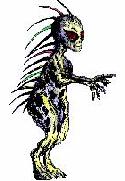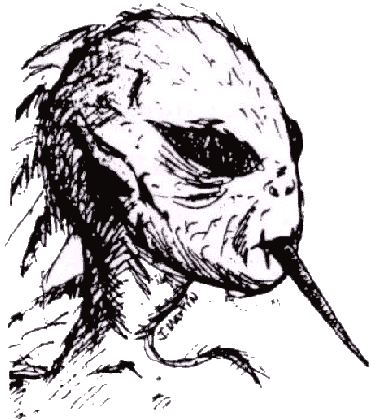Iquique, Chile � Last April, farmers in Calama, a mining town in the heart of Chile's harsh northern desert, awoke to find their goats and sheep dead in
their pens. An unidentified predator had mutilated the animals' necks. By the time the television cameras arrived, the rumor of a Chupacabra attack, Chile's
first, was spreading fast through the slender Pacific nation.
Bigfoot With Teeth? A mix of vampire and marauding, furry lizard, the Chupacabra has become one of the most common beasts studied under the general
heading of cryptozoology, the study of animals that may or may not be real. No one has ever caught a Chupacabra, though plenty of eyewitnesses claim to
have seen one. Descriptions vary. Eyewitness accounts during a rash of alleged attacks in 1995, many in Puerto Rico, described the animal as having a
"reptilian body, oval head, bulging red eyes, fanged teeth and long, darting tongue," according to a report at the time in the daily San Juan Star.
That same description has weathered decades of scrutiny. First appearing in the late 1960s, alleged Chupacabra attacks picked up markedly in the
mid-'90s, moving America's leading cryptozoologist, Loren Coleman, to term the animal "the single most notable cryptozoological phenomenon of the past
decade." Coleman is the author of Cryptozoology A to Z.
"What's unique about the Chupacabra is that it's crossing languages, which I think shows how small our world is getting," says Coleman, reached by phone
from his home in Portland, Maine. "It's sort of like Jennifer Lopez, kind of cross-cultural."
Latin Invasion Indeed, in Latin America, the animal's reputation has spread south on a wave of Internet and newspaper publicity, with the Chupacabra
behaving as a sort of celebrity monster. As recently as October of 1999, Brazil's Corriero Braziliense newspaper reported eight goats and three sheep dying
of single wounds to the neck. Other Brazilian eyewitnesses claimed to have seen an animal that may fly or leap with powerful, monkey-like hind legs,
attacking animals and humans both. Most witnesses also claim to have seen fangs. In every case, a predator appeared to wantonly kill livestock (usually
goats or chickens), then mysteriously disappeared. No meat was taken, and only a small bite to the neck was apparent. And though no photographs of the
assailant itself exist, hundreds of photos of the dead animals are on record, eerily similar � drained of blood, but otherwise intact. And there are those
eyewitnesses, from dozens of incidents in far-flung regions, all telling strikingly similar stories.
No such eyewitnesses came forward in Chile, but Calama's incident fits the profile. One fact in particular stands out: Whatever killed the livestock hadn't
eaten them, but inexplicably drained the animals of blood and left the meat behind.
Vampirism ... in paddocks ... of goats � classic Chupacabra behavior, never before seen so far south as Chile.




